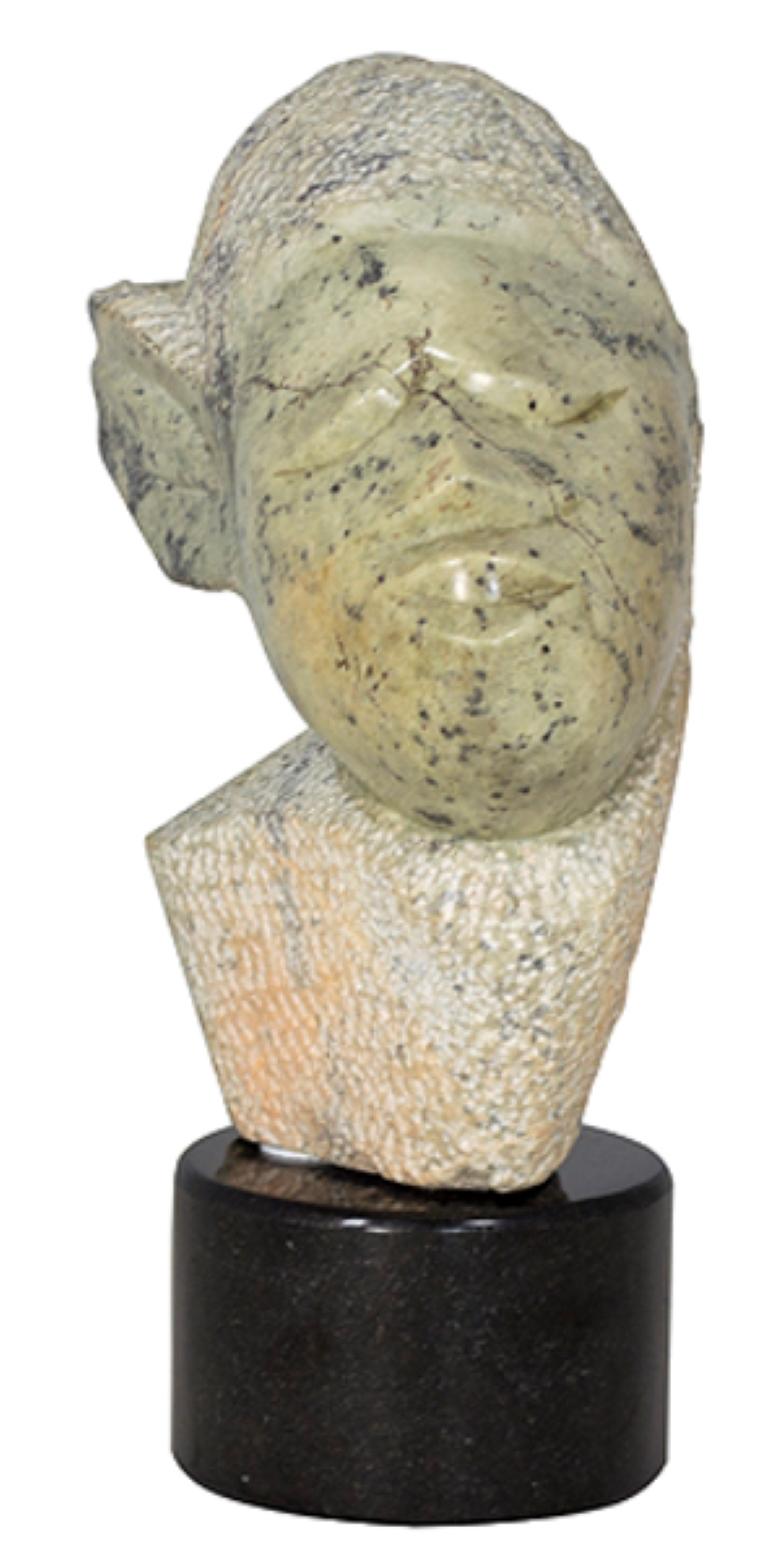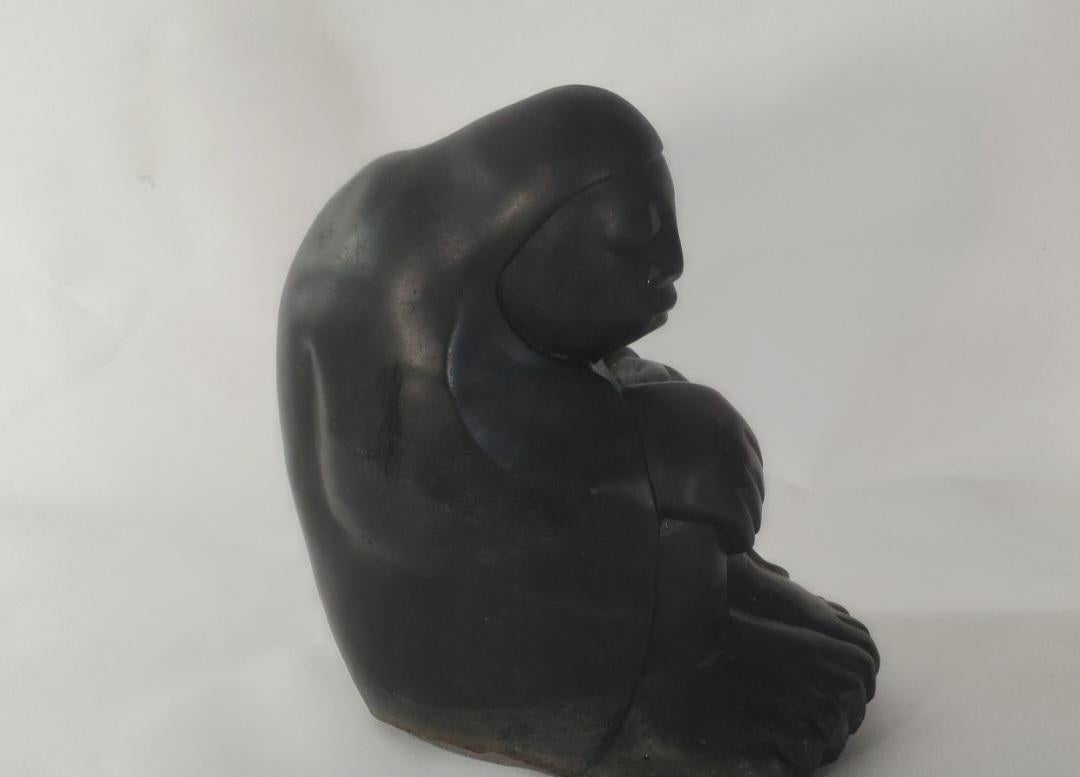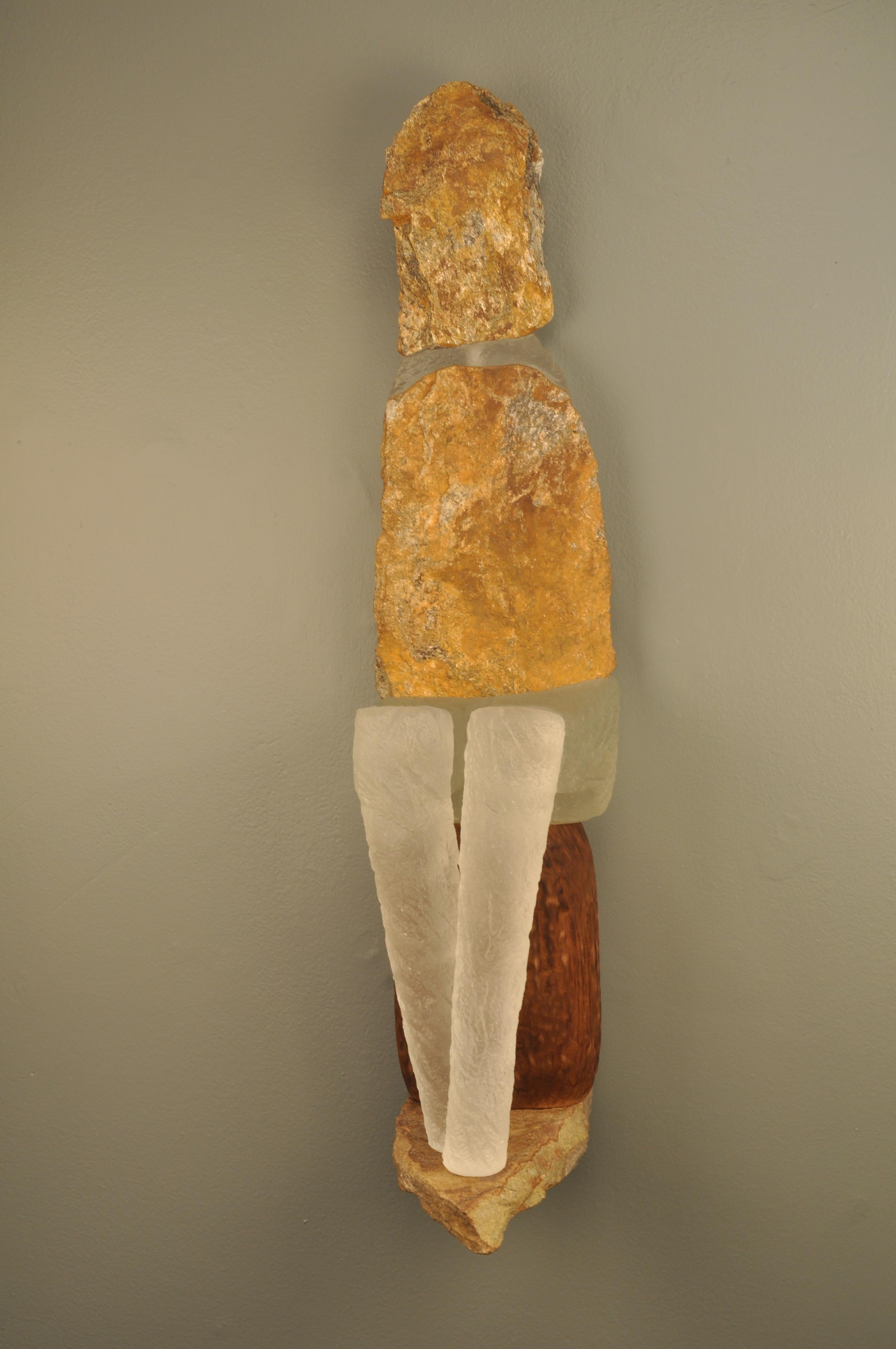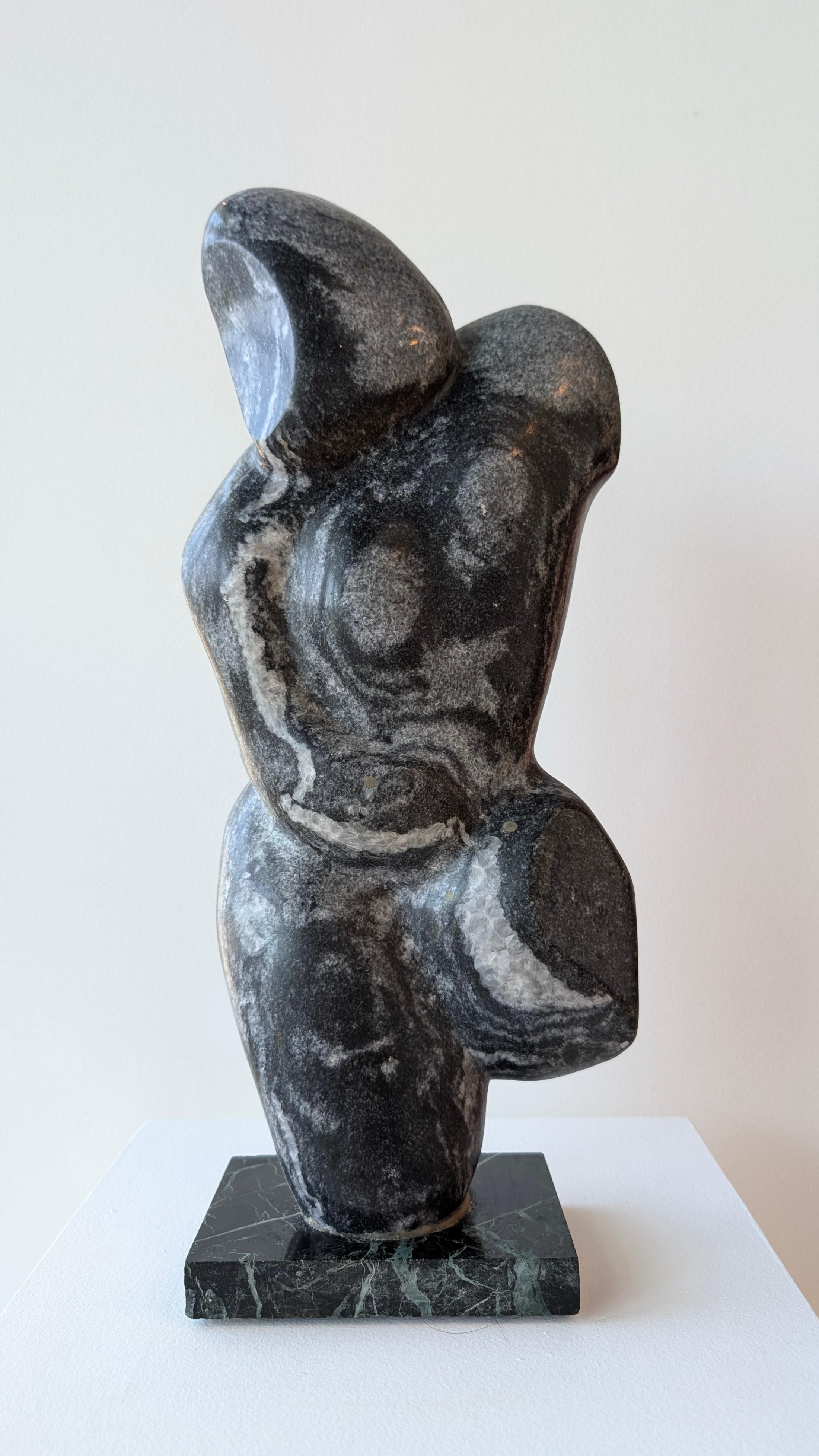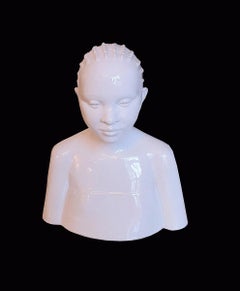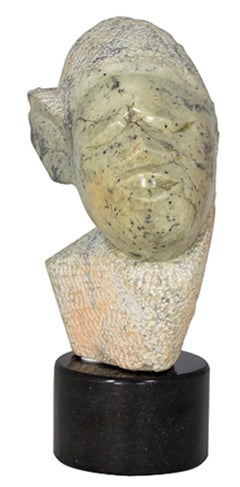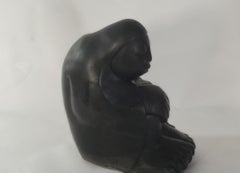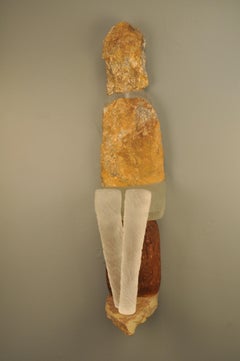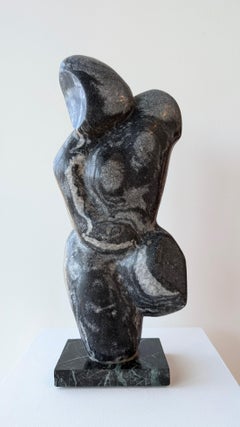Want more images or videos?
Request additional images or videos from the seller
1 of 2
Kennedy MUSEKIWAQuiet Moment
$6,500
£4,911.66
€5,684.83
CA$9,119.18
A$10,143.14
CHF 5,321.08
MX$123,769.40
NOK 66,786.26
SEK 62,937.95
DKK 42,434.88
About the Item
KENNEDY MUSEKIWA Kennedy Musekiwa was born on May 29, 1962 in the Marondera region of Zimbabwe. He is married and has four children. He was first inspired by his cousin, Victor Mutongwizo, and in 1985 began to work under his guidance. However, Joseph Ndandarika, first generation sculptor and a world-renowned master sculptor had the most influence on his sculpturing career. At first, Kennedy worked only on a small scale but as the years went by, he dedicated himself on a full time basis to sculpting, working on exquisite small pieces on which he built himself a reputation. He expanded his creativity and began to carve large pieces, including life-size types. When carving figures, Kennedy relies on his imagination and he usually creates traditional spirit themes. In some instances, he eloquently follows the natural shape of a raw rock from which he then draws the form. His works have been extensively exhibited in Europe, South Africa, Botswana, Canada and in particular the USA.
- Creator:Kennedy MUSEKIWA (1962, Zimbabwean)
- Dimensions:Height: 21 in (53.34 cm)Width: 13 in (33.02 cm)Depth: 14 in (35.56 cm)
- Medium:
- Movement & Style:
- Period:
- Condition:
- Gallery Location:Atlanta, GA
- Reference Number:1stDibs: LU155528716842
About the Seller
5.0
Vetted Professional Seller
Every seller passes strict standards for authenticity and reliability
Established in 2008
1stDibs seller since 2021
18 sales on 1stDibs
Typical response time: 1 to 2 days
- ShippingRetrieving quote...Shipping from: Atlanta, GA
- Return Policy
Authenticity Guarantee
In the unlikely event there’s an issue with an item’s authenticity, contact us within 1 year for a full refund. DetailsMoney-Back Guarantee
If your item is not as described, is damaged in transit, or does not arrive, contact us within 7 days for a full refund. Details24-Hour Cancellation
You have a 24-hour grace period in which to reconsider your purchase, with no questions asked.Vetted Professional Sellers
Our world-class sellers must adhere to strict standards for service and quality, maintaining the integrity of our listings.Price-Match Guarantee
If you find that a seller listed the same item for a lower price elsewhere, we’ll match it.Trusted Global Delivery
Our best-in-class carrier network provides specialized shipping options worldwide, including custom delivery.More From This Seller
View AllMother and Child
By Kennedy MUSEKIWA
Located in Atlanta, GA
KENNEDY MUSEKIWA Kennedy Musekiwa was born on May 29, 1962 in the Marondera region of Zimbabwe. He is married and has four children. He was first inspired by his cousin, Victor Mutongwizo, and in 1985 began to work under his guidance. However, Joseph Ndandarika...
Category
21st Century and Contemporary Modern Figurative Sculptures
Materials
Stone
Elegant
Located in Atlanta, GA
Jean-Louis Corby was born in 1951 and was predominantly influenced creatively by the 1970s. The 1970s were a period of consolidation and growth in the arts, most often characterised ...
Category
21st Century and Contemporary Modern Figurative Sculptures
Materials
Bronze
$13,000
Eté
By Hugo Rivas
Located in Atlanta, GA
“Making sculpture is a very complex matter. A word added to a form, ultimately helping to better define it. And ultimately helping to understand the whole.”
Ugo Riva is probably the...
Category
21st Century and Contemporary Modern Figurative Sculptures
Materials
Bronze
$46,800
Buste Africaine
By Mauro Corda
Located in Atlanta, GA
Mauro Corda’s figurative sculptures maintain a reverence for classical and modernist traditions, while also expressing the artist’s voice. Though born in France, the artist hails fro...
Category
21st Century and Contemporary Modern Figurative Sculptures
Materials
Terracotta
Inner Beauty
Located in Atlanta, GA
Béatrice Bissara was born in 1972; the visit of museums and the atmosphere of the auction houses marked her childhood. After her studies in history of...
Category
21st Century and Contemporary Figurative Sculptures
Materials
Bronze
$33,800
Bebe en guaya
Located in Atlanta, GA
Gerardo Fernandez South American Artist set of 10 bronze stick bugs with iron antennas. Some bugs have circles on their feet in order to make an art ...
Category
21st Century and Contemporary Modern Figurative Sculptures
Materials
Bronze
You May Also Like
'Waiting For Advisor' African (Shona)
Located in Milwaukee, WI
Comes with mounting 8-1/4"x 6-3/4"x 4"
African Shona Shona artists and crafts people have been working in different media for generations. These include paintings, pottery, basket ware, wood carvings, and sculpture done in metal as well as the stone carvings. While there is not a long standing tradition of sculpture in what is now Zimbabwe (formerly Southern Rhodesia), stone carvings dating from the 15th century were seen in Great Zimbabwe, an excavated temple near Bulawayo. Most of the artifacts from this location have been moved to museums in Cape Town, South Africa or London. It is generally agreed that Zimbabwean stone sculpture...
Category
Early 2000s Sculptures
Materials
Stone
Huddled Women
Located in Saratoga Springs, NY
Joseph Ndandarika (Zimbabwe, 1941 - 1991)
Huddled Woman
12 x 10 1/2 x 6 inches
Carved serpentine stone, signed
This carved stone sculpture by Joseph Ndandarika (1941 - 1991) i...
Category
1990s Other Art Style Sculptures
Materials
Stone
Contemplation by Thomas Scoon
By Thomas Scoon
Located in Woodmere, OH
Wall Mounted
Category
2010s Sculptures
Materials
Granite
Untitled
Located in Vancouver, CA
Ben McLeod (b. 1948, Aberdeen, Scotland) is a preeminent Canadian sculptor whose over five-decade practice is characterized by a profoundly self-propelled trajectory and the cultivat...
Category
1990s Abstract Figurative Sculptures
Materials
Marble
$3,900
Breathe
By Denny Haskew
Located in Loveland, CO
Breathe by Denny Haskew
Figurative Female Nude
17x9x8" ed/21 Bronze
"Wear just enough clothes
To stay warm.
Eat only enough to stop
the pangs of hunger.
Sit and meditate
rec...
Category
Early 2000s Contemporary Figurative Sculptures
Materials
Bronze
Belle en Songe
By Elisabeth Cibot
Located in Pasadena, CA
Sculpture
Original bronze
BELLE en SONGE
Wax lost bronze signed on the thigh: N °: 3/8
foundry stamp CHAPON
Born in 1960 in a family of artists collecting the bronzes of the Italian Renaissance...
Category
21st Century and Contemporary Contemporary Figurative Sculptures
Materials
Bronze
$6,400 Sale Price
20% Off
